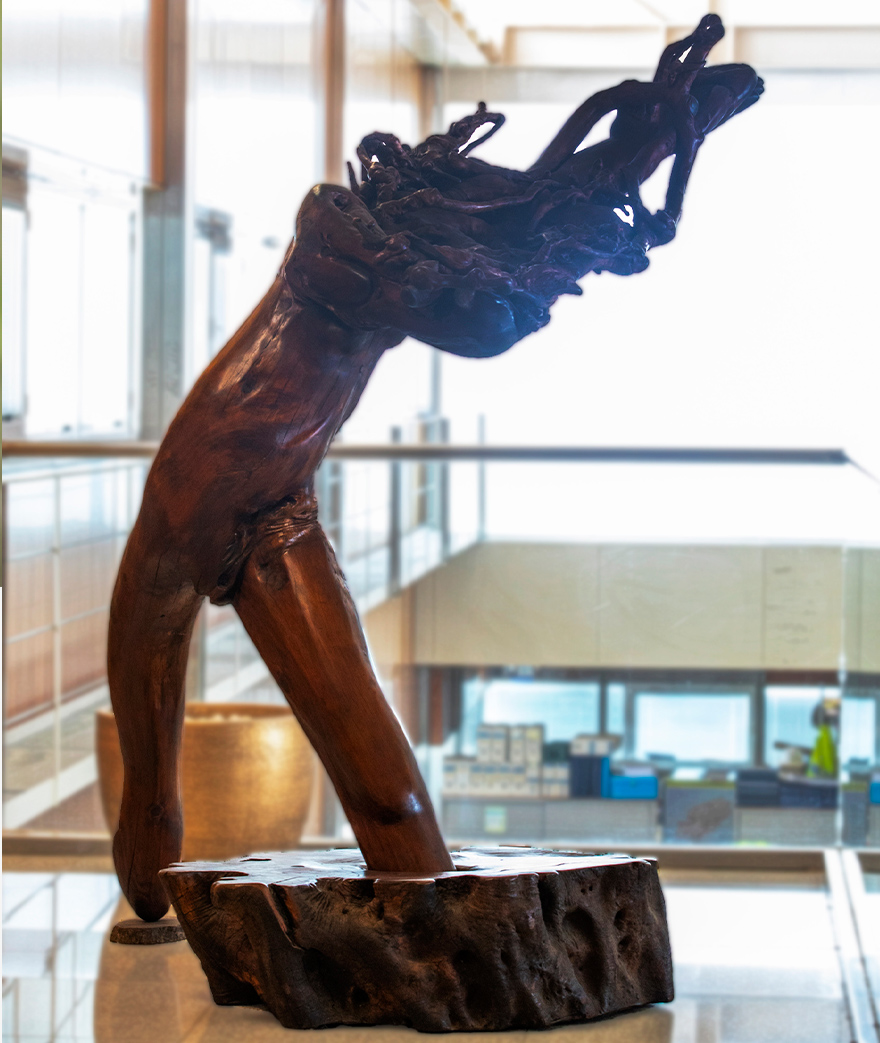When you see a striking sculpture carved from local Ibizan wood that is an unquestionable representation of Mediterranean nature, you are likely to be looking at a work by the famous Ibizan sculptor Antonio Hormigo Escandell. Considered to be one of the major Ibizan sculptors of the 20th century, Antonio Hormigo Escandell was born into a family of artists, and along with other members of his family he has left a significant artistic legacy in this part of the Mediterranean.
Ibiza has always served as a refuge for so many creative artists thanks to the colours and the light of the white island that have provided them with a constant source of inspiration. The Hormigos were originally from Extremadura, descended from a long line of tanners, and Damasco Hormigo was the first to land in Ibiza in 1880 dispatched to the island as a military guard. He went on to marry an Ibizan woman, Eulalia Josefa, and together they had four children, one of whom was Antonio Hormigo Josefa. Having been born in Ibiza, he decided to follow in his father’s footsteps and become a guard, however, he was expelled from the service following the Spanish Civil War which was when he began his craft carving pieces from wood. During his six years of incarceration, Antonio continued his wood carving which helped to make his prison sentence more bearable, and when he returned to the island, he began to sell articles carved from oleander and juniper wood, such as walking sticks, bracelets or riding crops. In 1945, Antonio opened a shop where his customer base increased with the advent of tourism, and he began to carve mythological, marine and botanical figures from almond, juniper and olive wood.
Antonio’s children learned their father’s art from a young age, immersed in a universe of authentic craftsmanship and manual arts, and so Leonardo Hormigo spent his time exclusively decorating and painting the carved pieces, and his second son Antonio Hormigo Escandell, became one of the most important sculptors in Ibiza’s history.
Antonio Hormigo Escandell
Antonio Hormigo Escandell, who was the second son of the guardsman turned artisan was to become the most important sculptor in the history of Ibiza. At a tender age, Antonio Hormigo started off by emulating his father’s work, using a simple pen knife and carving small pieces of oleander wood. As an adult, following attempts at different businesses, Antonio decided to devote himself entirely to sculpture and began his career searching timber yards for whole tree trunks to carve his large-scale sculptures which amazed everyone.
In the nineteen sixties he began exhibiting in several of the island’s galleries, and little by little, his career took off and he began to make a name for himself among the cognoscenti, later travelling further afield to exhibit his work in places such as Barcelona and Norway. “Es Verro” is one of his most striking works in Ibiza, created in 1977, it is a monument to the Ibizan peasant carved from a block of stone weighing 2.5 tonnes and 2.4 metres high, and can be found in Sant Antoni de Portmany.
Pedro Juan Hormigo
Antonio Hormigo Escandell died in 2019, however, this family’s artistic vein continues to endure as curiously, the nephew of the sculptor Antonio Hormigo Escandell, Pedro Juan Hormigo, is one of the most important metal casting sculptors in Ibiza, creating pieces that have become an essential part of the island’s heritage. One of the most famous works is the bronze statue of the salt worker that stands next to the church of Sant Francesc in the ses Salines natural park.
